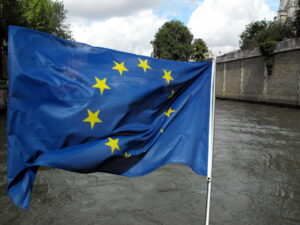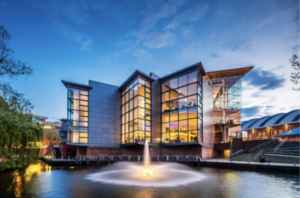Academics and researchers have published a new guide, which aims to help local communities to monitor air and noise pollution in their own neighbourhoods.
The University of Dundee and several European partners have published Citizen Sensing – A Toolkit, which is a practical guide to encourage groups to use mobile phone apps and open-source sensors to monitor their own local environment.
Environment Journal spoke to Mel Woods, a reader in creative intelligence at the University of Dundee about the new guide and how it can help communities take control.
What areas are covered in the new book and how can it help local communities?
The toolkit book is aimed at communities, who are interested in finding out more about the environment through the use of low-cost and easily accessible sensors.
It has come at the end of a 26-month long project, which was funded out of the European Commission. It’s a step-by-step guide for communities to go from the very start of the process by looking at their concerns and issues, and how to think about planning an environmental campaign.
It could be a group of neighbours, who are living on a busy road, where they are experiencing health issues due to air quality. Or it could be, as was the case in Barcelona where we did some work, part of an old town that was experiencing huge noise issues with large groups partying until late in the night.
Up and down the country in cities and universities, there is a mushrooming network of small places where people get together with bits of technology on a low-tech scale, like Fab Labs. People are coming together to build little electronics. It’s through bringing communities and those spaces together that we will start to get a really interesting mix of people, who want to present their own evidence about what is happening around them, particularly around air pollution and noise pollution.
How much technical knowledge is required to get the best out of the toolkit?
It really depends on what you are trying to monitor. There are some very simple air quality sensors and tubes that you can buy online. They are pretty cheap. The Smart Citizens Toolkit, which is a sensor one of our partners has produced, is a little bit more expensive.
But, technically, you need less and less knowledge. They are very similar to the sensors you may have in your Fitbit. They are getting more and more accessible and the barriers to use are getting lower and lower.
But it’s always useful to identify people in a group who are more technically minded. What we have found is when communities come together, the people often join for different reasons. Around a third of them are quite interested in the technology and data itself. Then another third are really up in arms about an environmental issue and want to do something about it. Then there will be another group of people who will be interested in both, but might not be very driven. We have found that mix of folk are usually very successful in making things happen.
Could it be used by schools and encourage children to take an interest in the environment?
Although it’s not in the book, we have done three pilots with children called the Smart Kids Lab. We have a separate website for that. It was an introduction to sensors in schools with freely downloadable worksheets, so children can build very basic sensors in the classroom. It can be anything from using red cabbage dye to measure the pH in water to measuring methane in the air.
How important is it that we collect more data around air pollution and the environment?
Air quality is measured through official stations in cities. They are normally placed in green spaces or parks. They are very few of them, comparatively and on a hyper-local level, air quality can change from street-to-street, depending on the flow of the wind, humidity and temperature.
There are blackspots in cities, which are consistently recording high levels in pollution. Some cities have a couple of streets that have buses, high-sided buildings. There are many other factors that affect air quality. Some of them can be surprising. In Amsterdam, we found one particular street had some lovely trees. But when the trees came out into leaf in the summer, they formed a continuous canopy, which kept the air pollution at street level. People often jump to conclusions, where they think they can point the finger at the cause of pollution, but when you look at it, it’s far more complex.
Do you get the feeling there’s a growing appetite among communities to look after their own environment?
I think people are more aware of environmental issues. They are more aware of the influence of the environment on their health and their community. It makes it easier to do something if has relevance to your own life, or the people around you. With the rise of the Internet of Things and the way we are bringing technologies like Amazon Alexa into our homes, rightly or wrongly, we are becoming more accepting of connective technologies. People are more aware of what sensors can do and what benefit it can bring to their lives. But, it’s not just about getting data, it’s about making decisions about that data. At a very broad level of climate change, it’s difficult to know what to do for the best. In reality, it’s hard to grasp some of these huge concepts, but at a local level it is much easier.















